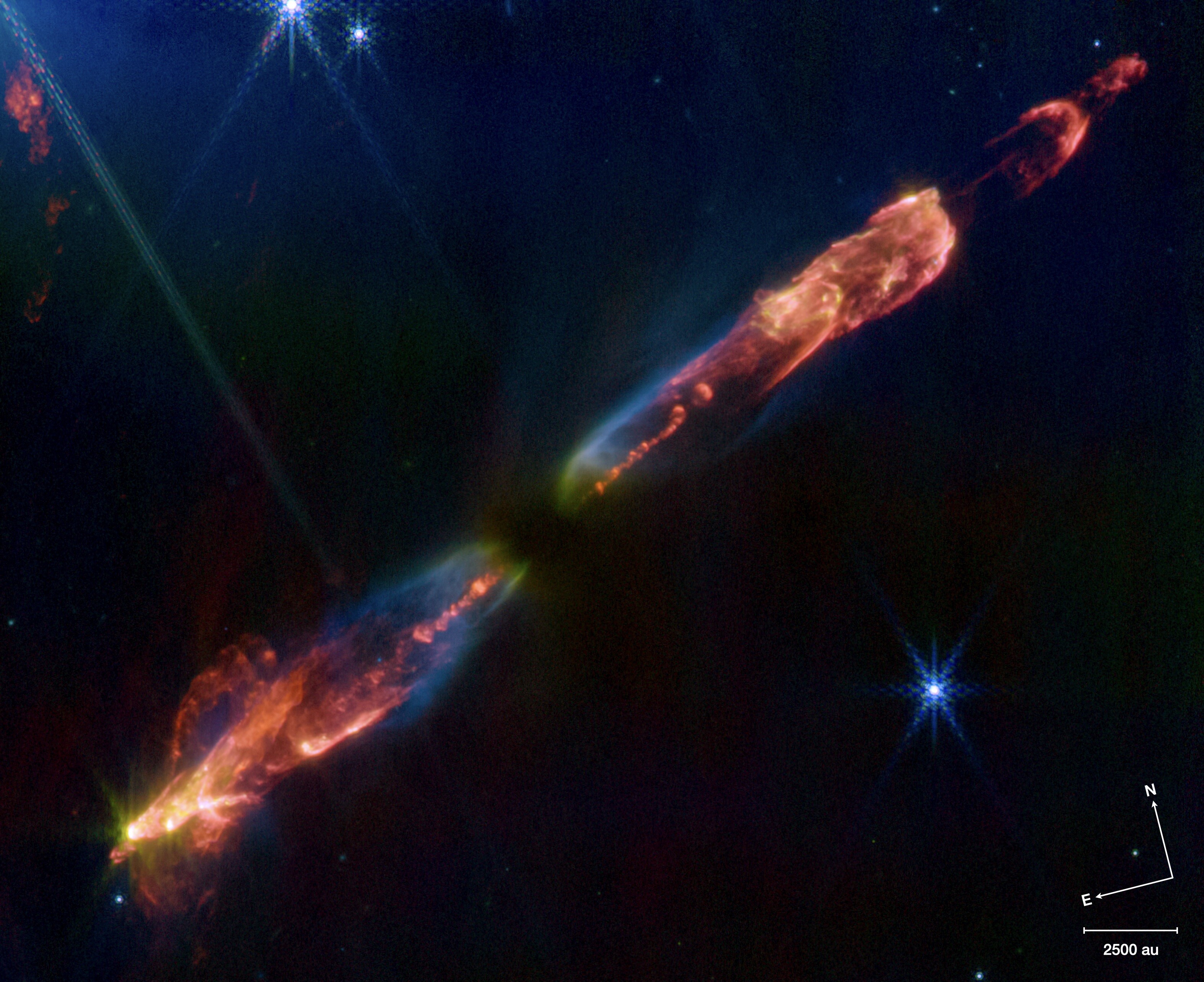James Webb Space Telescope Feed Post
Hot Topic: Herbig-Haro 211
(originally posted on the feed on August 24)
Outflows from the Youngest Stars are Mostly Molecular The formation of stars and planets is accompanied not only by the build-up of matter, i.e., accretion, but also by its expulsion in the form of highly supersonic jets that can stretch for several parsecs1,2. As accretion and jet activity are correlated and because young stars acquire most of their mass rapidly early on, the most powerful jets are associated with the youngest protostars3. This period, however, coincides with the time when the protostar and its surroundings are hidden behind many magnitudes of visual extinction. Millimetre interferometers can probe this stage but only for the coolest components3. No information is provided on the hottest ( > 1000 K) constituents of the jet, i. e. the atomic, ionized, and high temperature molecular gas that are thought to make up the jet’s backbone. Can we detect such a high temperature spine and what is it made up of? Here we report near-infrared JWST observations of Herbig-Haro 211, an outflow from an analogue of our Sun when it was at most a few times 104 years old. These reveal copious emission from hot molecules explaining the origin of the so-called “Green Fuzzies”4–7 discovered nearly two decades ago by the Spitzer Space Telescope8. This outflow is found to be propagating slowly in comparison to its more evolved counterparts and, surprisingly, almost no trace of atomic or ionized emission is seen suggesting its spine is almost purely molecular. HH211 is a still-forming protostar located about 1,000 light-years away in the constellation Perseus.
